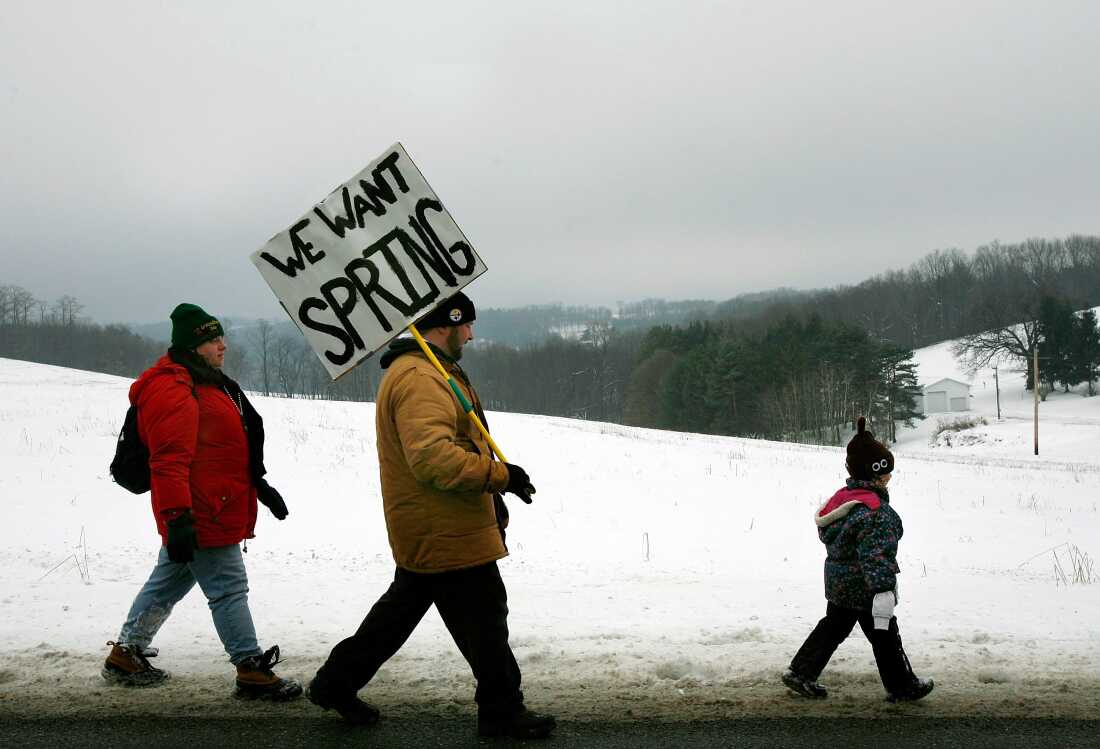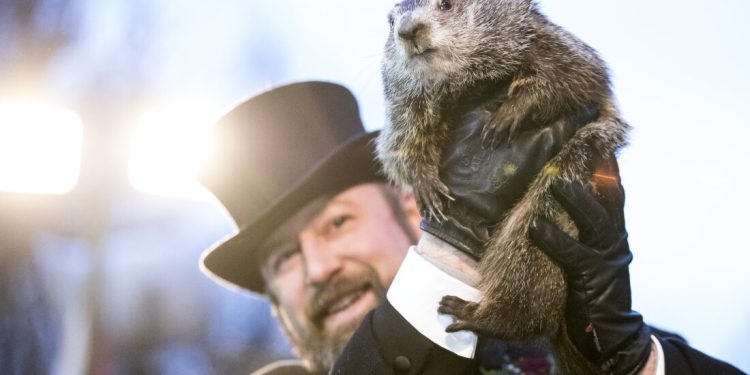
Punxsutawney Phil is retained by its manager so that the crowd can see them during the ceremonies of the Marmotte day in 2018 in Punxsutawney, in Pennsylvania.
Brett Carlsen / Getty Images
hide
tilting legend
Brett Carlsen / Getty Images
As a growing child in Pennsylvania, there are a few state treasures that you come to venerate, such as the Tastykake butter krimpets, a 64 chalkland pack with a treble still in the box, sweet Bretzels and Hershey chocolate. But no locally produced treat could affect the majesty of the ultimate state icon: PunxSutawney Phil.

The Dayhog Day has always been so exciting for me when I was a child. Even if I grew up hundreds of kilometers of punxsutawney, I remember approaching the holidays with the same hope in the bottle of a possible day of snow. I always wanted Phil would see his shadow and we would be in more snow, days spent outside on sleds and evenings inside with hot chocolate. And for most of my childhood, Phil delivered, with predictions of long winters – although it took me some time, perhaps longer than the others, to realize that his predictions did not represent much scientifically . But I always loved the suspense in the heart of the holidays and the question: what will PunxSutawney Phil will predict the rest of the season?
I will be the first to admit that Groundhog Day is also a strange vacation (and some can get bogged so that it is not at all a vacation). There is the pump and the circumstances, the hats and the superior tuxedos, and the myth according to which there is only one punxsutawney Phil, which has been predictions since the 1880s. And it definitively takes the cake for The holidays with the most on the theme of rodents. But for all its delicious strangeness, Groundhog Day is also a rarity among American holidays.

A family attended the celebrations of the Marmot day in Punxsutawney in 2007.
Mark Wilson / Getty images
hide
tilting legend
Mark Wilson / Getty images
Take a look at an American cultural calendar, and you will find that the majority of our biggest holidays are at the service of our creation of national myths. We commemorate our independence from the foreign power and the emancipation of slaves. We remember our military achievements and our fallen soldiers, and honored imposing American characters like George Washington and Martin Luther King Jr.
A number of cultures and religions also leave their mark, popular celebrations of fat Tuesday, Passover, Ramadan and Christmas dotting the year. But Groundhog Day is the only popular American party that explicitly celebrates our relationship with nature and dependence on the delicate balance of seasons.
Although many Americans observe a vacation that coincide with major seasonal changes – Halloween and Diwali near the midst of fall; Christmas, Hanukka and Kwanzaa near the winter solstice; Easter and Passover falling near the Vernal equinox – we rarely celebrate them as such. Even the few civic holidays that we have that are directly linked to nature do not draw our attention to the change of the seasons. The arbor day spends with little fanfare or national attention. Earth Day looks less like a celebration and more like an annual reprimand on our carbon footprints. Thanksgiving is mainly used to ramp in the ramp of the shopping season before the Christmas.
Around the table, the Americans give thanks for things worthy like friends, family and health, but few count food on the table and earth which provided it among the things to thank. And none of these holidays marks seasonal change in the rotation of the earth around the sun.
How the day of Marage is unique
Marmot day is different. Arriving roughly in the middle of winter, the seasonal road point between the winter solstice and the spring equinox, historians believe that the marmot day has its origins in the Celtic celebration of the Pachetist of Imbolc, later syncretized in candles. The day of the marmot is a celebration of nature itself and our place. He invites us to participate in an old ritual, asking us if winter will continue, or if the thaw will come early, which allows us to start a new cycle of planting, growth and harvest.

The changing seasons have been an important source of humanity celebrations for millennia. The ancient Egyptians marked the winter solstice and the seasonal changes made by the flood season. Nowruz, the New Year’s celebration observed in Central Asia, has been celebrated on the spring equinox for over 3,000 years. Some of our oldest and most mysterious megalithic sites, such as the Circle of Pierre Nabta Playa and Stonehenge, indicate the link between our moving planet, the rhythms of the year and the first humans would go to predict them with precision.
In our modern American life, many of us are at a comfortable distance from the unsubscribe of the seasons. The cars transport us to mobile interior spaces, whatever the season; The apartments and houses are equipped with electric heating and cooling systems that house us for the hardest days of nature. We have put more distance between the earth that gives our food and the well -lit stores where we get it. At the start of our national project, we were a people who marked our fortune during the seasons: more than 90% of Americans were farmers. Today, this number is less than 2%.

We also live at a time when the earth changes quickly, and the seasons in North America also change. Spring seems to arrive early, in autumn late – the culture growth season changes and tormented by more serious extreme times. Human life, plant life and animal life are intimately linked to the balance of seasons. The separation between our daily life and the change of seasons can make us comfortable, but it can also have a cost.

The brand manager John Griffiths holds Punxsutawney Phil, who did not see his shadow in 2020.
Images Jeff Swensen / Getty
hide
tilting legend
Images Jeff Swensen / Getty
Marmot day can be a reminder of this delicate balance. It is a time of year when you look, the sky remains lighter in the evening and the sun rises earlier in the morning. The birds begin their migration to the north and the dawn cracking with their songs. And in a relatively obscure city of Pennsylvania, a group of people wearing upper hats will hold a groundhog in the air and will try to determine if it has maintained its shadow.
So let’s celebrate the marmot day, in all its bizarre and original strangeness. Let us remind us that we are still in the winter claws and hope for a temperate spring. Let us remind us that we have not mastered nature, but that we just got more comfortable in its field. And are we asking for this crucial turning point, what awaits us? Will it be more of the same thing, or are we prepared for change?


